Text
Apollo 50th Anniversary

Buzz Aldrin’s photo of Neil Armstrong, while still in Earth orbit, a little over an hour after liftoff.

view of Earth from Earth orbit, about 2 hours after launch.

View of the Lunar Module during Transposition and Docking, prior to extraction from the S-IVB (third) stage, about three and a half hours into the mission…after Trans-lunar injection and leaving Earth oribt.

View of the Earth from Apollo 11 during the Trans-lunar coast, about ten hours into the mission. The spacecraft, with the Lunar Module now extracted and the S-IVB stage discarded, was already about 56,000 miles from the Earth when this photo was taken.

Buzz Aldrin on Day 3 of the Apollo 11 mission, in the Lunar Module during its checkout en route to the Moon. Buzz is on the left side of the cabin (where Armstrong would stand during the lunar landing) and is placing a pair of sunglasses in his jacket’s arm pocket.

Photo taken looking past the Lunar Module and back toward the Earth, on Day 3 of the mission during the translunar coast.

Day 4 of the Apollo 11 mission…50 years ago today, July 19, 1969… The crew is on the far side of the Moon, out of contact with the Earth, and has just performed the lunar orbit insertion burn of the Service Module engine, placing them in lunar orbit. On Earth, mission control waits anxiously for word of success, as Aldrin photographs far side features from lunar orbit. In this photo, the structure of the attached Lunar Module is also visible. source
905 notes
·
View notes
Photo

Source: [x]
Click HERE for more facts!
15K notes
·
View notes
Photo

In hopes of inspiring younger generations, NASA created this series of gorgeous retro travel posters that encourage you to imagine a future where common space travel is a legitimate possibility. Source




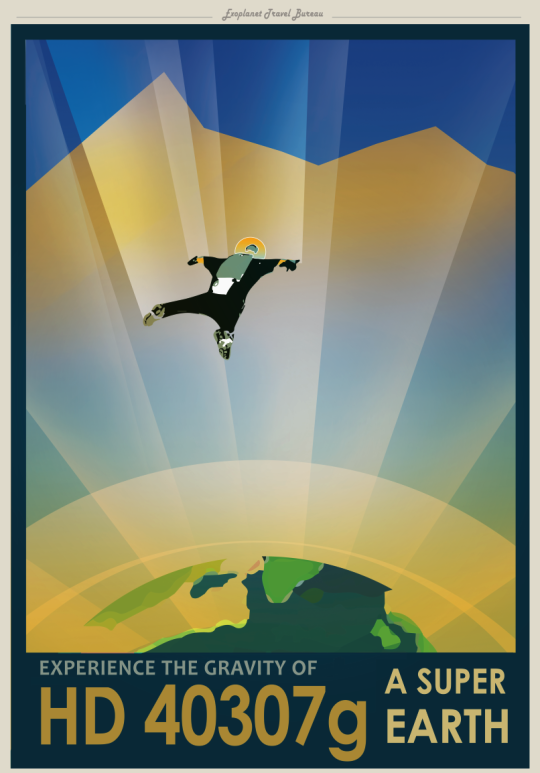

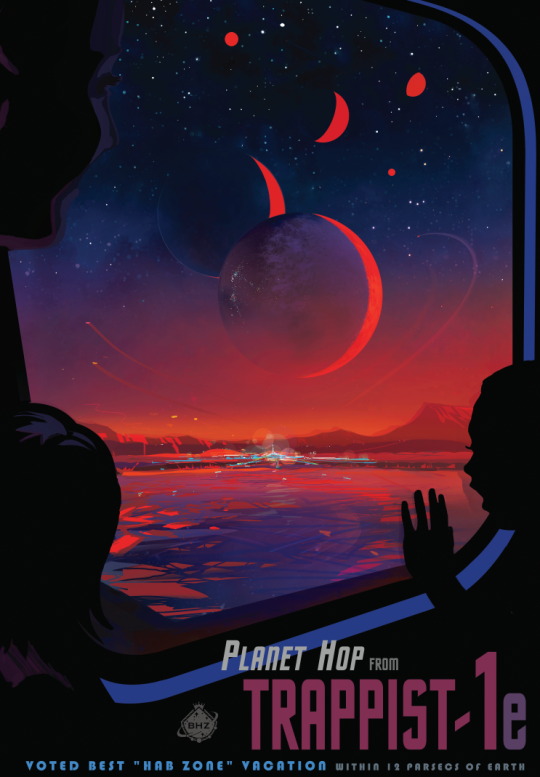

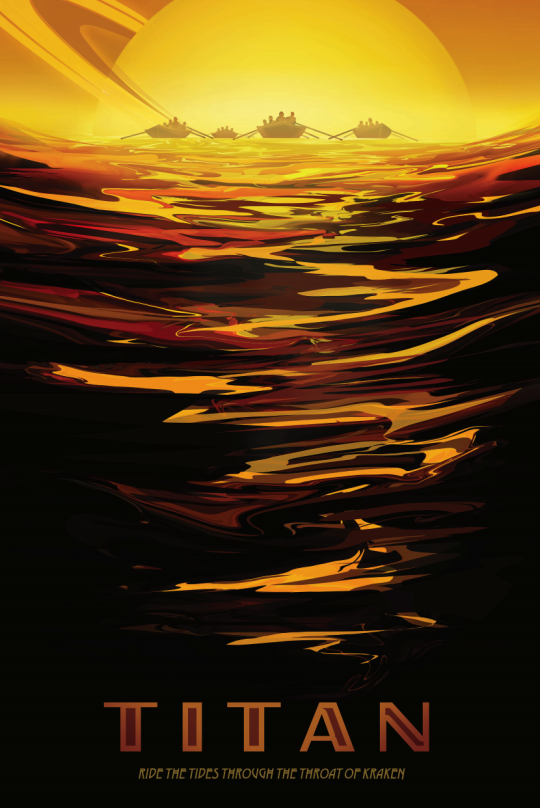

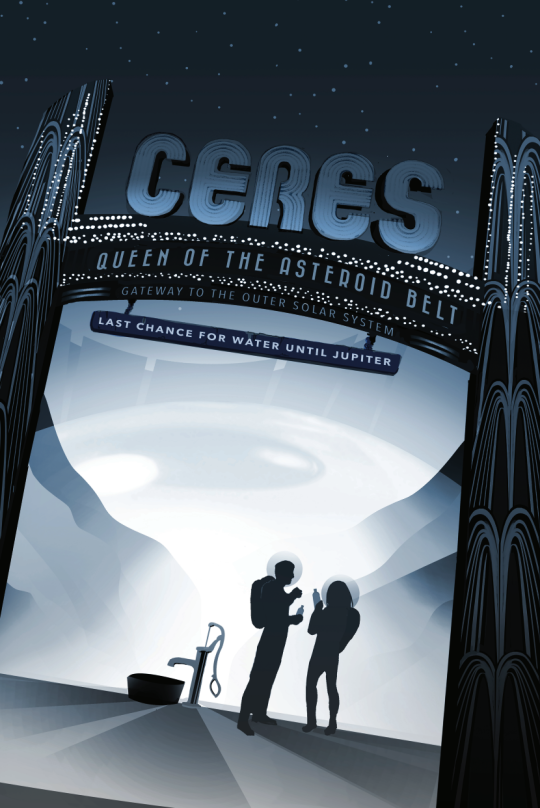


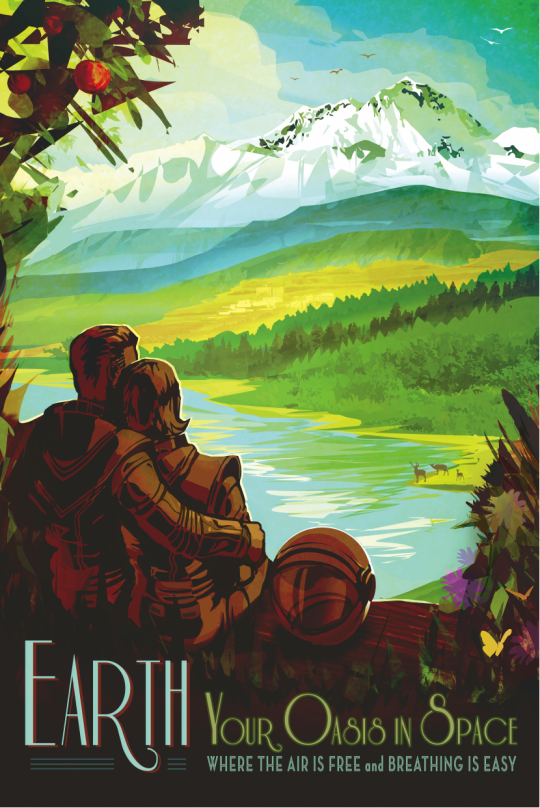
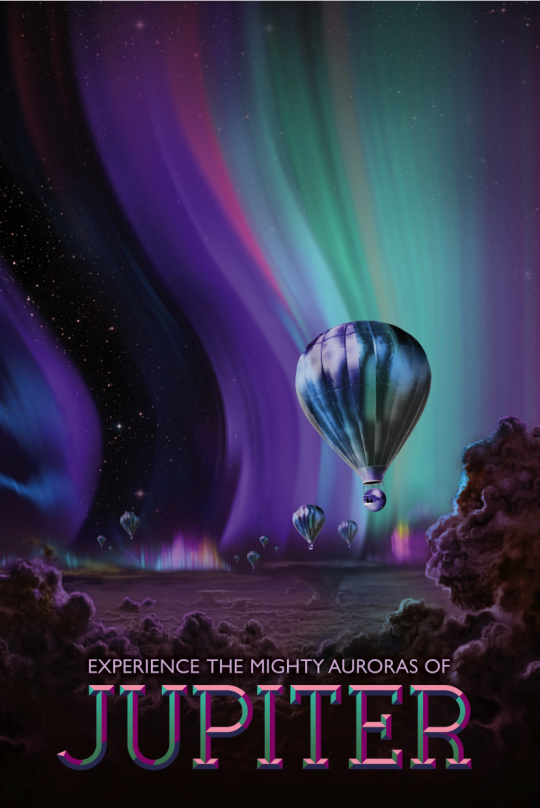

118K notes
·
View notes
Photo

Pi explained visually.
202K notes
·
View notes
Text
String Theory
String theory is a fascinating physical model in which all particles are replaced by one-dimensional objects known as strings. This theory says that we live in more than four dimensions, but we can not perceive them.
String theory, is a complete theory and unites quantum physics with Einstein’s general relativity.

On distance scales larger than the string scale, a string looks just like an ordinary particle, with its mass, charge, and other properties determined by the vibrational state of the string. In string theory, one of the many vibrational states of the string corresponds to the graviton, a quantum mechanical particle that carries gravitational force. Thus string theory is a theory of quantum gravity.

According to string theory, the reason we can not observe these dimensions is because they are very small and compact (smaller than the plank length 10 −35)


Compactification is one way of modifying the number of dimensions in a physical theory. In compactification, some of the extra dimensions are assumed to “close up” on themselves to form circles. In the limit where these curled up dimensions become very small, one obtains a theory in which spacetime has effectively a lower number of dimensions. A standard analogy for this is to consider a multidimensional object such as a garden hose. If the hose is viewed from a sufficient distance, it appears to have only one dimension, its length. However, as one approaches the hose, one discovers that it contains a second dimension, its circumference. Thus, an ant crawling on the surface of the hose would move in two dimensions.

Compactification can be used to construct models in which spacetime is effectively four-dimensional. However, not every way of compactifying the extra dimensions produces a model with the right properties to describe nature. In a viable model of particle physics, the compact extra dimensions must be shaped like a Calabi–Yau manifold

Another approach to reducing the number of dimensions is the so-called brane-world scenario. In this approach, physicists assume that the observable universe is a four-dimensional subspace of a higher dimensional space. In such models, the force-carrying bosons of particle physics arise from open strings with endpoints attached to the four-dimensional subspace, while gravity arises from closed strings propagating through the larger ambient space. This idea plays an important role in attempts to develop models of real world physics based on string theory, and it provides a natural explanation for the weakness of gravity compared to the other fundamental forces

One notable feature of string theories is that these theories require extra dimensions of spacetime for their mathematical consistency. In bosonic string theory, spacetime is 26-dimensional, while in superstring theory it is 10-dimensional, and in M-theory it is 11-dimensional. In order to describe real physical phenomena using string theory, one must therefore imagine scenarios in which these extra dimensions would not be observed in experiments.

The original version of string theory was bosonic string theory, but this version described only bosons, a class of particles which transmit forces between the matter particles, or fermions. Bosonic string theory was eventually superseded by theories called superstring theories. These theories describe both bosons and fermions, and they incorporate a theoretical idea called supersymmetry.

This is a mathematical relation that exists in certain physical theories between the bosons and fermions. In theories with supersymmetry, each boson has a counterpart which is a fermion, and vice versa.

There are several versions of superstring theory: type I, type IIA, type IIB, and two flavors of heterotic string theory (SO(32) and E8×E8). The different theories allow different types of strings, and the particles that arise at low energies exhibit different symmetries. For example, the type I theory includes both open strings (which are segments with endpoints) and closed strings (which form closed loops), while types IIA, IIB and heterotic include only closed strings.

Branes
In string theory and other related theories, a brane is a physical object that generalizes the notion of a point particle to higher dimensions. For instance, a point particle can be viewed as a brane of dimension zero, while a string can be viewed as a brane of dimension one. It is also possible to consider higher-dimensional branes. In dimension p, these are called p-branes. The word brane comes from the word “membrane” which refers to a two-dimensional brane
In string theory, D-branes are an important class of branes that arise when one considers open strings

D-branes are typically classified by their spatial dimension, which is indicated by a number written after the D. A D0-brane is a single point, a D1-brane is a line (sometimes called a “D-string”), a D2-brane is a plane, and a D25-brane fills the highest-dimensional space considered in bosonic string theory. There are also instantonic D(–1)-branes, which are localized in both space and time.
Duality
A striking fact about string theory is that the different versions of the theory prove to be highly non-trivial in relation. One of the relationships that exist between different theories is called S-duality. This is a relationship that says that a collection of interacting particles in a theory may in some cases be viewed as a collection of weak interacting particles in a completely different theory. Approximately, a collection of particles is said to interact strongly if they combine and deteriorate frequently and interact poorly if they do so infrequently. The type I string theory turns out to be equivalent by S-duality to the heterotic string theory SO (32). Likewise, type IIB string theory is related to itself in a non-trivial way by S-duality

Another relationship between different string theories is T-duality. Here one considers strings propagating around a circular extra dimension. T-duality states that a string propagating around a circle of radius R is equivalent to a string propagating around a circle of radius 1/R in the sense that all observable quantities in one description are identified with quantities in the dual description. For example, a string has momentum as it propagates around a circle, and it can also wind around the circle one or more times. The number of times the string winds around a circle is called the winding number. If a string has momentum p and winding number n in one description, it will have momentum n and winding number p in the dual description. For example, type IIA string theory is equivalent to type IIB string theory via T-duality, and the two versions of heterotic string theory are also related by T-duality.

Black holes
In general relativity, a black hole is defined as a region of spacetime in which the gravitational field is so strong that no particle or radiation can escape. In the currently accepted models of stellar evolution, black holes are thought to arise when massive stars undergo gravitational collapse, and many galaxies are thought to contain supermassive black holes at their centers.

Black holes are also important for theoretical reasons, as they present profound challenges for theorists attempting to understand the quantum aspects of gravity. String theory has proved to be an important tool for investigating the theoretical properties of black holes because it provides a framework in which theorists can study their thermodynamics.

The big bang theory doesn’t offer any explanation for what started the original expansion of the universe. This is a major theoretical question for cosmologists, and many are applying the concepts of string theory in attempts to answer it. One controversial conjecture is a cyclic universe model called the ekpyrotic universe theory, which suggests that our own universe is the result of branes colliding with each other.
Some things that string theory could explain: Neutrinos would have to have mass (minimum), Decay of Proton, New fields of force (short and long range) defined by some forms of calabi-yau, Explanations for Dark Matter.
sources: x, x, x, x, x, x

String theory is a very complex and broad area, so this post is only a summary. To better understand, I suggest you read Brian Greene’s books: The Elegant Universe and The Fabric of the Cosmo.
4K notes
·
View notes
Text

The original nine: Viva la Pluto
7K notes
·
View notes
Text
An asterism is any prominent star pattern that is not a whole constellation.
26 notes
·
View notes
Text
90% to 99% of all matter in the universe is hydrogen.
47 notes
·
View notes
Text
Reminder that the “vaccines cause autism” isn’t a “mistake” or a “misunderstanding” or the result of bad evidence, it was JUST completely made up by one guy, on purpose. He had no reason to suspect a connection between the two and he never did. He wanted to make money on his own vaccine formula by discrediting the existing MMR vaccine and he literally only chose autism because he knew it was a scary, confusing new term to the general public. That is 100% all. Autism was a hot-button bandwagon issue because the average person didn’t know what it was and so he considered it ripe for spreading misinformation.
8K notes
·
View notes
Text

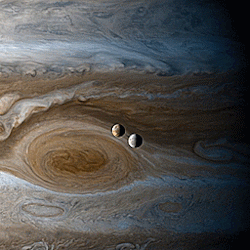
Timelapse of Europa & Io orbiting Jupiter, shot from Cassini during its flyby of Jupiter
247K notes
·
View notes
Photo


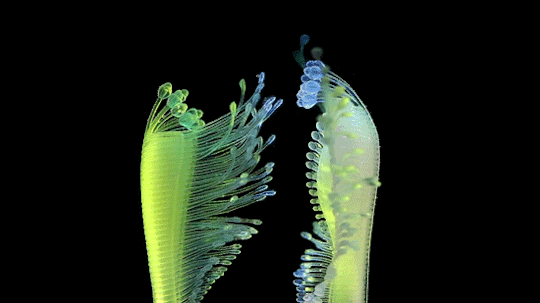
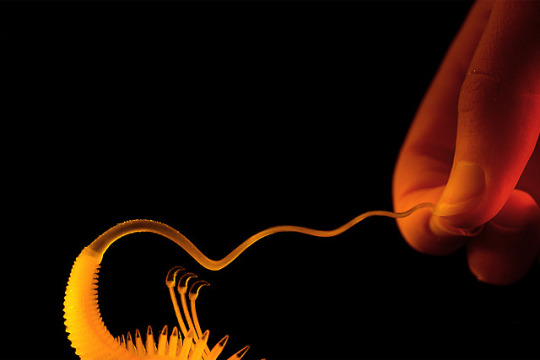
4D-Printed Aquatic Plants Spring to Life in “Hydrophytes” by Nicole Hone
37K notes
·
View notes
Link
As most of you know, Hurricane Michael has recently wiped out the Florida Panhandle, which just so happens to be where I live. My family is from Panama City, Fl, but the storm has left us homeless. We’re staying at a hotel room in Pensacola until Friday but after that we have no where to go. As we’re trying to find arrangements, we are running dangerously low on funds. I hate to make this post, but desperate times call for desperate measures. Any donations at all would be appreciated, literally even a dollar would help.
60 notes
·
View notes
Text
. * . * .🌙 * . * ☄️. * * . 🌍* . . * 💫 * . * . . *. ✨
* . * 🌑 . * * . * 🌕 . * * . * . *⭐️ * .
79K notes
·
View notes
Photo
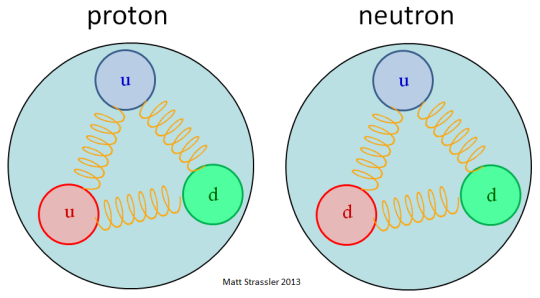
What are Quarks?
A quark is a type of elementary particle and a fundamental constituent of matter. Quarks combine to form composite particles called hadrons, the most stable of which are protons and neutrons, the components of atomic nuclei.
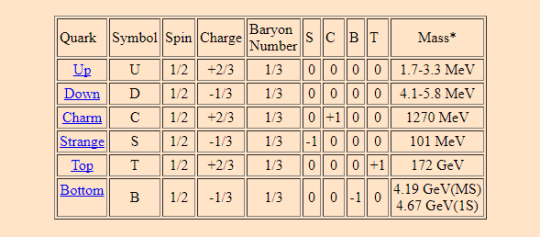
There are six types of quarks, known as flavors: up, down, strange, charm, top, and bottom Up and down quarks have the lowest masses of all quarks. The heavier quarks rapidly change into up and down quarks through a process of particle decay: the transformation from a higher mass state to a lower mass state. Because of this, up and down quarks are generally stable and the most common in the universe, whereas strange, charm, bottom, and top quarks can only be produced in high energy collisions (such as those involving cosmic rays and in particle accelerators).
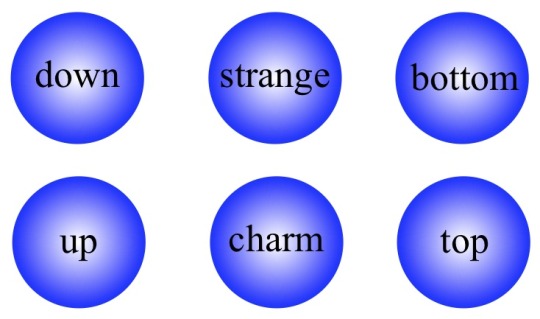
Due to a phenomenon known as color confinement, quarks are never directly observed or found in isolation; they can be found only within hadrons, such as baryons (of which protons and neutrons are examples) and mesons. For this reason, much of what is known about quarks has been drawn from observations of the hadrons themselves.
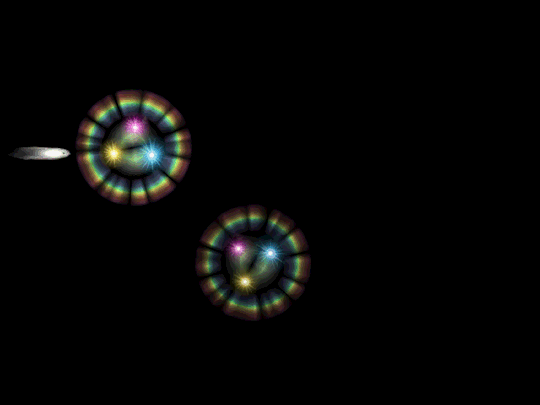
This movie illustrates the action inside the nucleus of a deuterium atom containing a proton and a neutron, each with three quarks. An electron strikes a quark inside a proton, passing energy to the quark before the electron bounces back. The quark now has so much energy “stuffed” into it, it creates a cascade of new particles as it flies out of the proton. The result is two new, two-quark particles.
Quarks have various intrinsic properties, including electric charge, mass, color charge, and spin. Quarks are the only elementary particles in the Standard Model of particle physics to experience all four fundamental interactions, also known as fundamental forces (electromagnetism, gravitation, strong interaction, and weak interaction), as well as the only known particles whose electric charges are not integer multiples of the elementary charge.
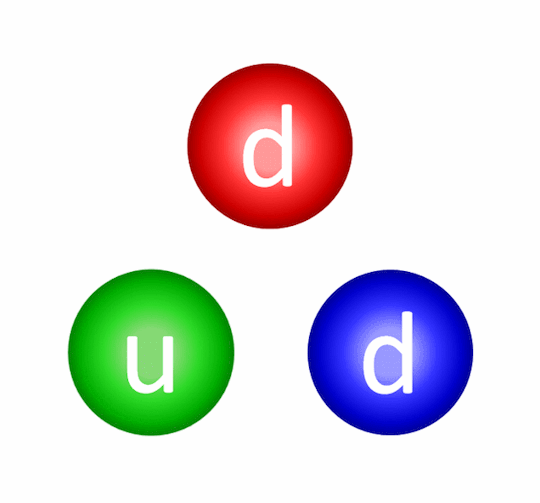
An animation of the interaction inside a neutron. The gluons are represented as circles with the color charge in the center and the anti-color charge on the outside.
Mass
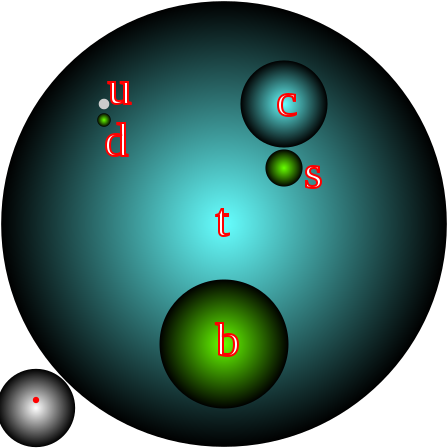
Current quark masses for all six flavors in comparison, as balls of proportional volumes. Proton and electron (red) are shown in bottom left corner for scale.
Two terms are used in referring to a quark’s mass: current quark mass refers to the mass of a quark by itself, while constituent quark massrefers to the current quark mass plus the mass of the gluon particle field surrounding the quark. These masses typically have very different values. Most of a hadron’s mass comes from the gluons that bind the constituent quarks together, rather than from the quarks themselves.
Field lines from color charges

In quantum chromodynamics, a quark’s color can take one of three values or charges, red, green, and blue. An antiquark can take one of three anticolors, called antired, antigreen, and antiblue (represented as cyan, magenta and yellow, respectively). Gluons are mixtures of two colors, such as red and antigreen, which constitutes their color charge. QCD considers eight gluons of the possible nine color–anticolor combinations to be unique.
Spin

In quantum mechanics and particle physics, spin is an intrinsic form of angular momentum carried by elementary particles, composite particles (hadrons), and atomic nuclei.
Spin is one of two types of angular momentum in quantum mechanics, the other being orbital angular momentum. The orbital angular momentum operator is the quantum-mechanical counterpart to the classical angular momentum of orbital revolution: it arises when a particle executes a rotating or twisting trajectory (such as when an electron orbits a nucleus)
Gluon

A gluon is an elementary particle that acts as the exchange particle (or gauge boson) for the strong force between quarks. It is analogous to the exchange of photons in the electromagnetic force between two charged particles. In layman’s terms, they “glue” quarks together, forming protons and neutrons.
Baryons and Mesons

A baryon is a composite subatomic particle made up of three quarks. Baryons and mesons belong to the hadron family of particles, which are the quark-based particles. As quark-based particles, baryons participate in the strong interaction, whereas leptons, which are not quark-based, do not.
In particle physics, mesons are hadronic subatomic particles composed of one quark and one antiquark, bound together by the strong interaction. Because mesons are composed of quark sub-particles, they have a physical size, with a diameter of roughly one femtometer, which is about 2⁄3 the size of a proton or neutron. All mesons are unstable, with the longest-lived lasting for only a few hundredths of a microsecond. Charged mesons decay (sometimes through mediating particles) to form electronsand neutrinos. Uncharged mesons may decay to photons. Both of these decays imply that color is no longer a property of the byproducts.
Source: wikipedia, hyperphysics
(To know more click the links: Baryon, Meson, Gluon)
Images: x, x, x, x, x
4K notes
·
View notes
Photo

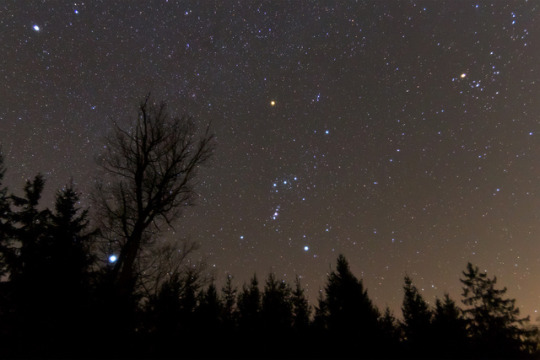
Orion (constellation)
Orion is a prominent constellation located on the celestial equator and visible throughout the world. It is one of the most conspicuous and recognizable constellations in the night sky. It was named after Orion, a hunter in Greek mythology. Its brightest stars are Rigel (Beta Orionis) and Betelgeuse (Alpha Orionis), a blue-white and a red supergiant, respectively.
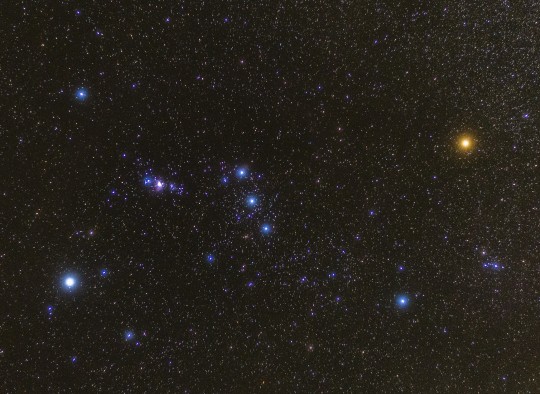
Orion’s seven brightest stars form a distinctive hourglass-shaped asterism, or pattern, in the night sky. Four stars—Rigel, Betelgeuse, Bellatrix and Saiph—form a large roughly rectangular shape, in the centre of which lie the three stars of Orion’s Belt—Alnitak, Alnilam and Mintaka.
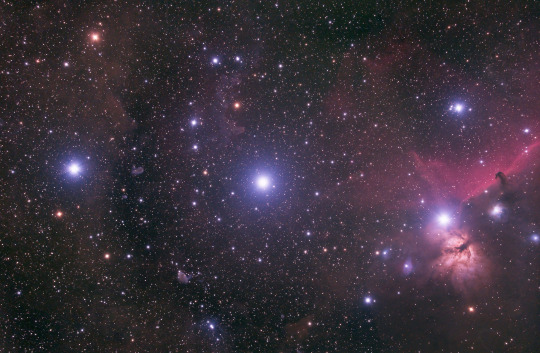
Orion’s Belt or The Belt of Orion is an asterism within the constellation. It consists of the three bright stars Zeta (Alnitak), Epsilon (Alnilam), and Delta (Mintaka). Alnitak is around 800 light years away from earth and is 100,000 times more luminous than the Sun; much of its radiation is in the ultraviolet range, which the human eye cannot see. Alnilam is approximately 1340 light years away from Earth, shines with magnitude 1.70, and with ultraviolet light is 375,000 times more luminous than the Sun. Mintaka is 915 light years away and shines with magnitude 2.21. It is 90,000 times more luminous than the Sun and is a double star: the two orbit each other every 5.73 days.

Around 20 October each year the Orionid meteor shower (Orionids) reaches its peak. Coming from the border with the constellation Gemini as many as 20 meteors per hour can be seen. The shower’s parent body is Halley’s Comet.
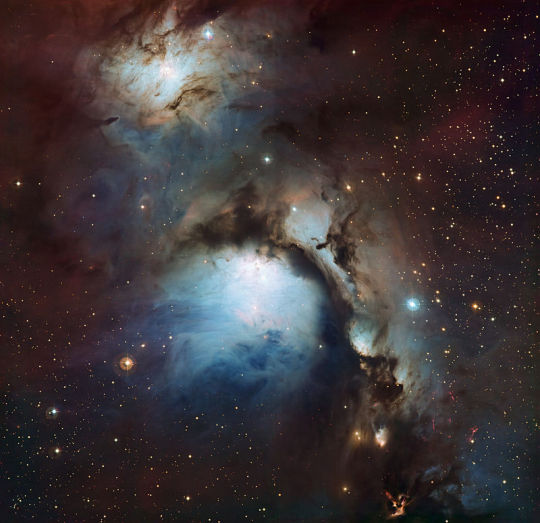
M78 (NGC 2068) is a nebula in Orion. With an overall magnitude of 8.0, it is significantly dimmer than the Great Orion Nebula that lies to its south; however, it is at approximately the same distance, at 1600 light-years from Earth. It can easily be mistaken for a comet in the eyepiece of a telescope.

Another fairly bright nebula in Orion is NGC 1999, also close to the Great Orion Nebula. It has an integrated magnitude of 10.5 and is 1500 light-years from Earth. The variable star V380 Orionis is embedded in NGC 1999.

Another famous nebula is IC 434, the Horsehead Nebula, near ζ Orionis. It contains a dark dust cloud whose shape gives the nebula its name.

NGC 2174 is an emission nebula located 6400 light-years from Earth.
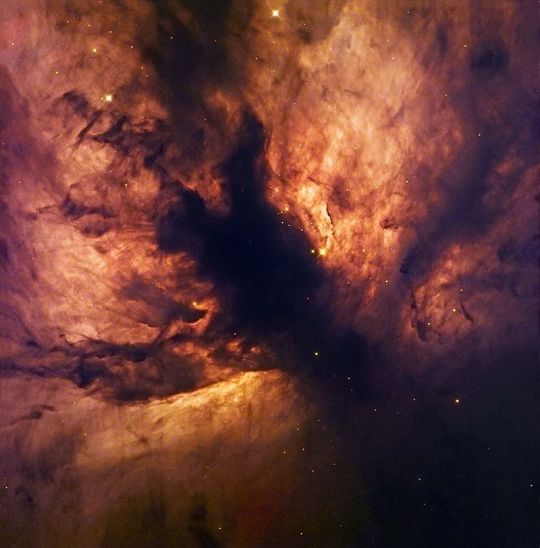
Besides these nebulae, surveying Orion with a small telescope will reveal a wealth of interesting deep-sky objects, including M43, M78, as well as multiple stars including Iota Orionis and Sigma Orionis. A larger telescope may reveal objects such as Barnard’s Loop and the Flame Nebula (NGC 2024), as well as fainter and tighter multiple stars and nebulae.
All of these nebulae are part of the larger Orion Molecular Cloud Complex, which is located approximately 1,500 light-years away and is hundreds of light-years across. It is one of the most intense regions of stellar formation visible within our galaxy.
source
image credit: Tunç Tezel, H. Raab, Andrew Walker, Geert Vanhauwaert, Jason Hullinger, ESO, NASA/ESA Hubble
#Orion is my absolute favorite constellation!!!#It has so much stuff in it!!#Astronomy#constellation#stars#nebula
5K notes
·
View notes

